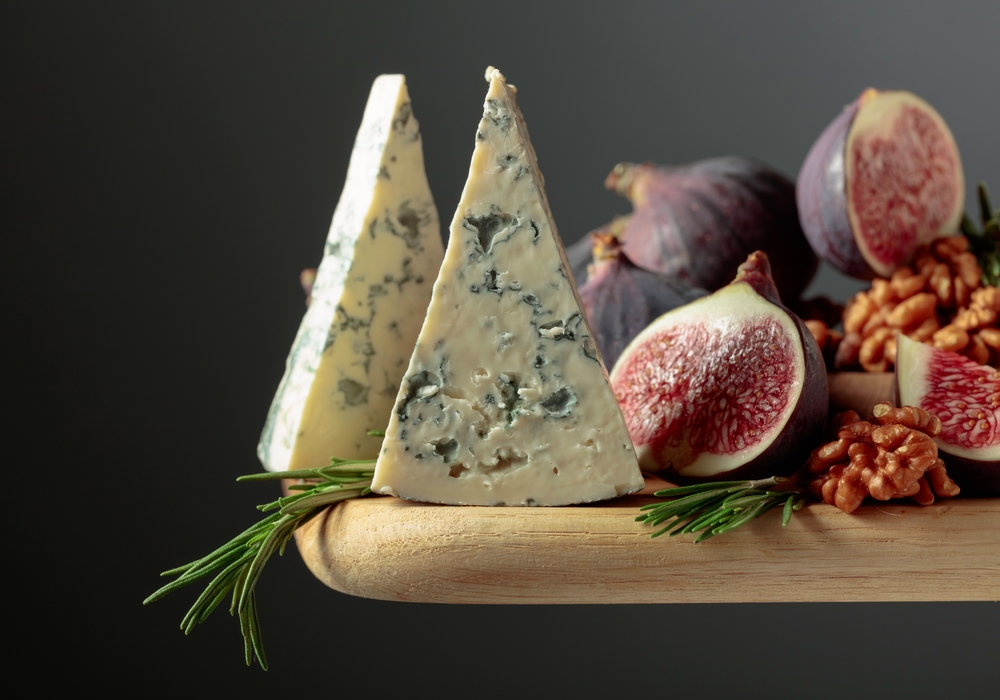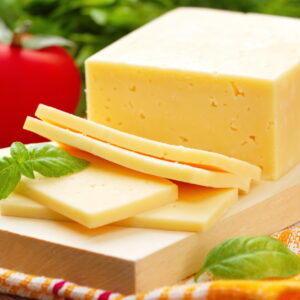Blue Mould – Penicillium roqueforti
The Veins of Intensity
Blue cheeses like Danish Blue, Gorgonzola and Roquefort get their marbled appearance and tangy bite from Penicillium roqueforti. This blue mould is added directly to the milk or curds and allowed to grow within the cheese.
To encourage the development of the blue mould inside the wheel, cheesemakers pierce the cheese with needles or rods, allowing air to enter and activate mould growth in the interior. This internal moulding creates blue or green veins and contributes sharp, peppery, and sometimes earthy flavours. Over time, Penicillium roqueforti breaks down fats and proteins, giving blue cheeses their crumbly texture and complex aroma.
Available in 2 forms; traditional and vegan.
Additional information
| Weight | N/A |
|---|---|
| Dimensions | N/A |
| Type | Dairy, Non-Dairy Vegan |
Nature’s Alchemy of Flavour and Texture
In cheesemaking, moulds are more than just harmless fungi—they are vital agents of transformation. Carefully selected strains of mould are used to enhance flavour, develop texture, and create the distinctive appearances of many beloved cheeses. By introducing specific moulds at different stages of production, cheesemakers guide the ageing process, allowing the cheese to ripen from the surface or the interior in unique ways. Moulds help break down fats and proteins, unlocking a range of aromas and tastes that wouldn’t be possible in their absence. Far from being a flaw, mould is a celebrated feature in many cheese varieties, delivering everything from creamy softness to bold, tangy character.
Mould-ripened cheeses like Danish Blue, Gorgonzola, Camembert and Brie have long been favourites among cheese lovers, celebrated for their rich textures, complex flavours and characteristic appearances. But behind their creamy centres and tangy veins lies the fascinating science—and art—of moulds in cheesemaking. Far from being unwanted spoilage, specific moulds are intentionally introduced into cheeses to transform the milk curd into a deliciously ripened delicacy.
There are three main types of moulds used in cheese ripening: white, blue, and red. Each one plays a distinct role in flavour development, texture, and rind formation.
Moulds are not just passive additions; they are living cultures that actively transform the cheese from the outside or inside. By breaking down milk fats and proteins, they release a cascade of flavour compounds—nutty, buttery, earthy, tangy, or spicy, depending on the mould and ageing conditions.
Each variety of mould-ripened cheese offers a sensory experience shaped by tradition, environment and microbiology. Whether it’s the creamy decadence of Brie, the bold veins of Gorgonzola, or the pungent punch of a washed-rind wheel, moulds turn ordinary curds into extraordinary cheese.
So next time you slice into a wedge of Camembert or crumble some blue over a salad, you can thank the quiet work of moulds—nature’s own flavour-makers—for the delicious complexity they bring to your plate.





